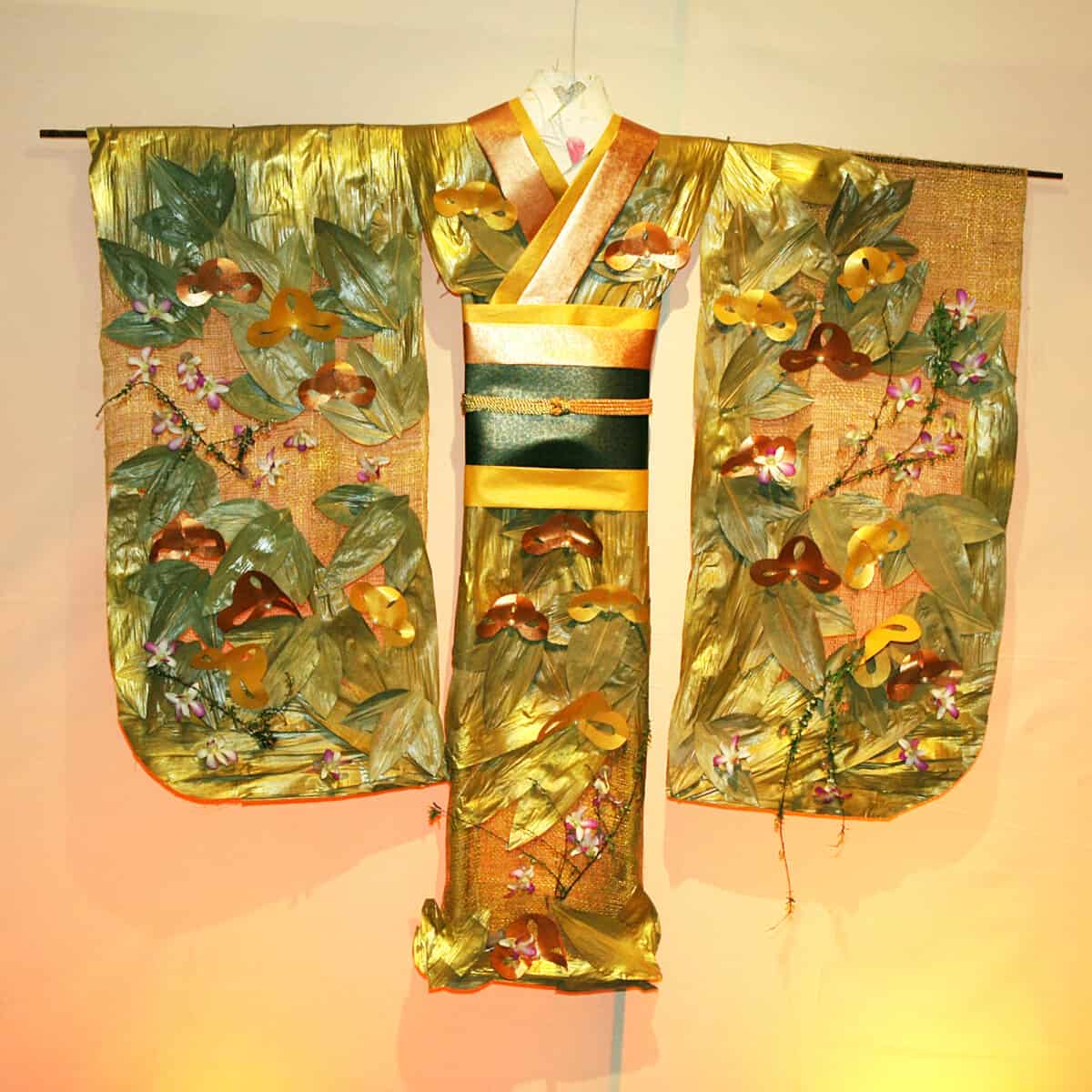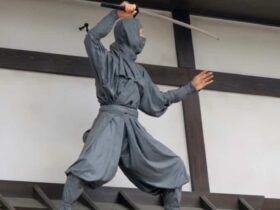The Kimono is a traditional Japanese garment that dates back centuries. The garment is such an important symbol of Japan that it is often people’s first association with the country.
The kimono is a long Japanese traditional robe with distinctively wide sleeves. The Obi belt is used to fasten the garment around the waist. Another defining feature of the Kimono is the beautifully knotted Obi belt, a myriad of designs and patterns are used in kimonos
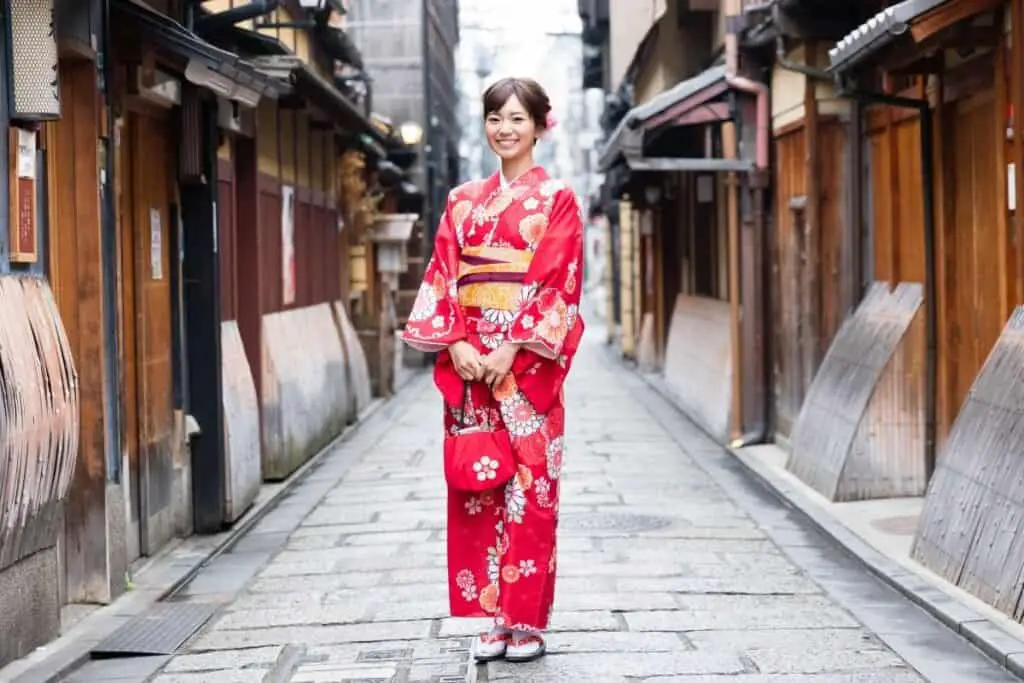
Yukata vs Kimono
The most noticeable distinction between a kimono and a yukata is that kimono typically, but not always include an internal lining, whereas yukata never have and are created from a single layer of cloth.
Furisode
The furisode is a long-sleeved kimono for young women that reaches to the ankles or calves. They are generally worn in beautiful colors and ornate patterns on ceremonial events like weddings and Coming-of-Age Day, a Japanese national holiday in January.
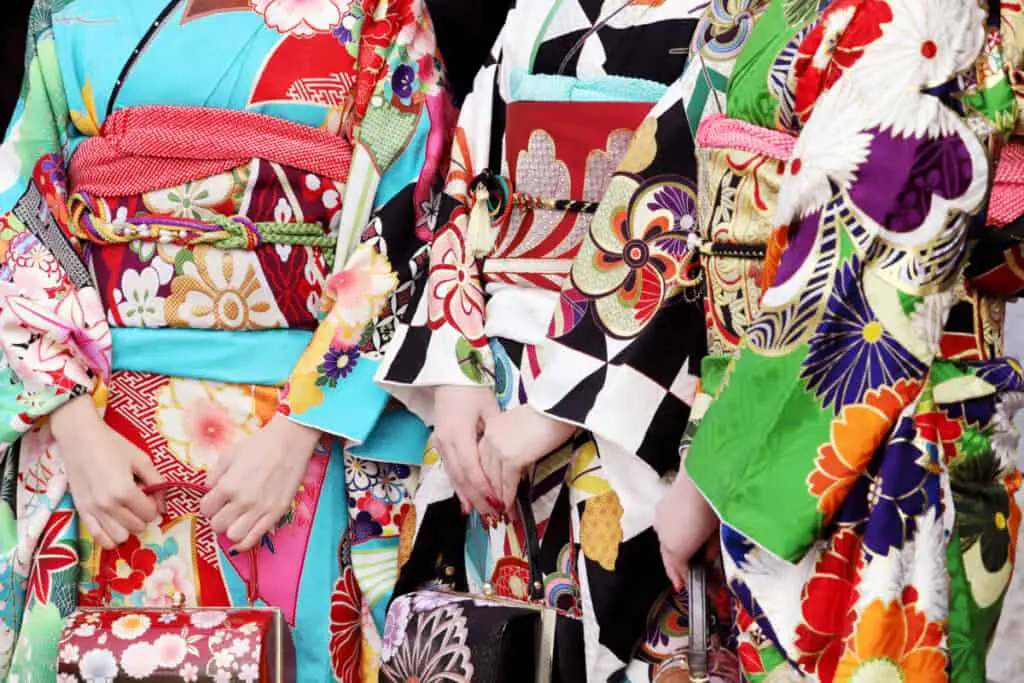
Uchikake
Uchikake is a very formal kimono that is commonly worn by brides or stage performers. It’s meant to be worn as a coat outside of the kimono, called kakeshita or kosode and obi or sash, and the obi is never tied around the uchikake.
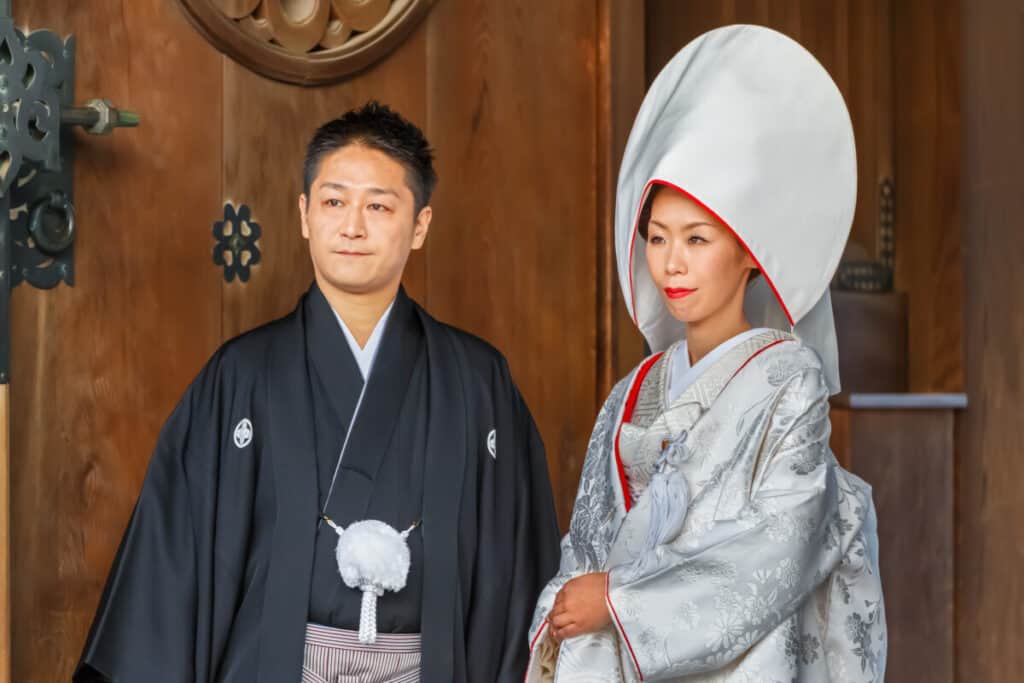
Haori
Haori It’s a jacket-like short kimono. Michiyuki: It’s a coat that’s worn over a kimono. Juban is also known as Nagajuban is a kind of undergarment.
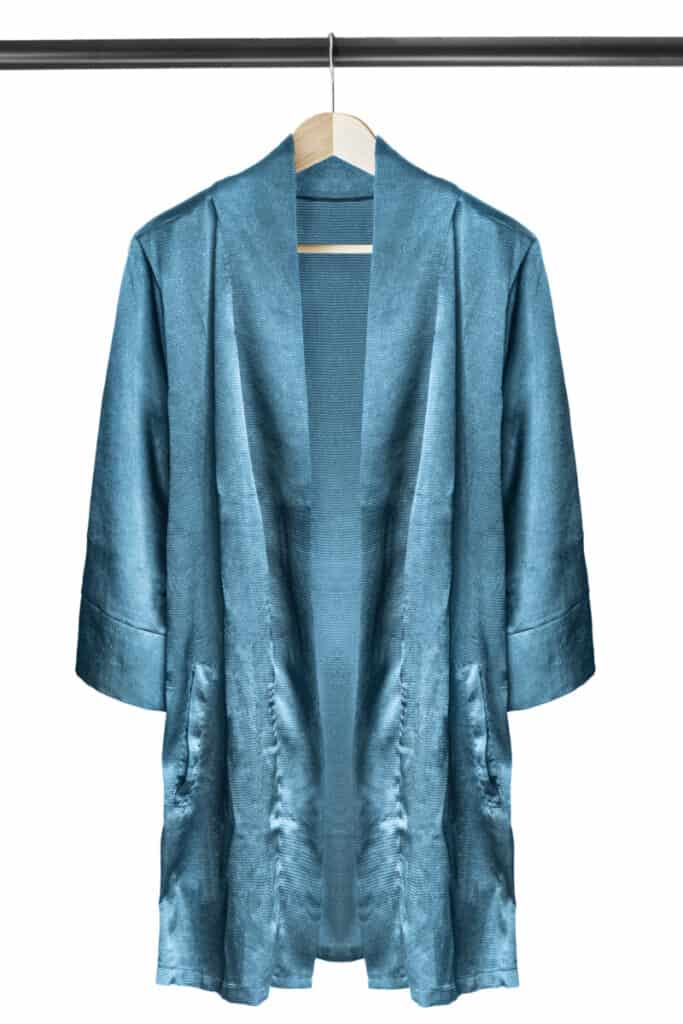
Popularity
Although nowadays the kimono is seen more like a piece of clothing to be worn as a costume or is kept for special occasions, there was once a time among the Japanese when it was worn as an everyday item. In fact, the very name “kimono” actually means “something to wear”.
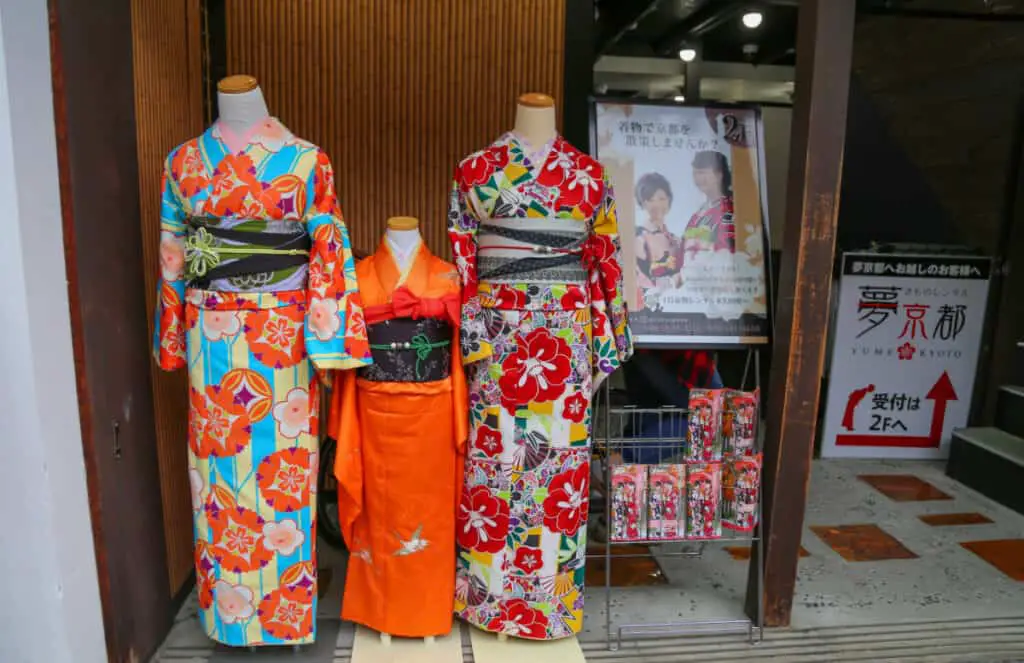
Although many people will often think of the kimono as a beautifully decorated piece of clothing, there is actually a rich history associated with the kimono as well as the specific designs that are printed onto it.
The kimono was a normal piece of clothing until about 70 years ago in Japan when Western-style clothes began to significantly increase in popularity.

In fact, some people would wear Western clothes out in the streets and then change into a kimono once they returned home. However, the war marked a turning point in the kimono’s popularity which relegated it to occasion wear for special holidays and celebrations and festivals.
The different parts of the kimono
The kimono is known as a piece of clothing made from many layers and this is due to the different elements that are involved in making up and securing the garment. The main pieces are the actual kimono, the obi (the belt that holds it in the right place), and the nagajūban (the undergarment).
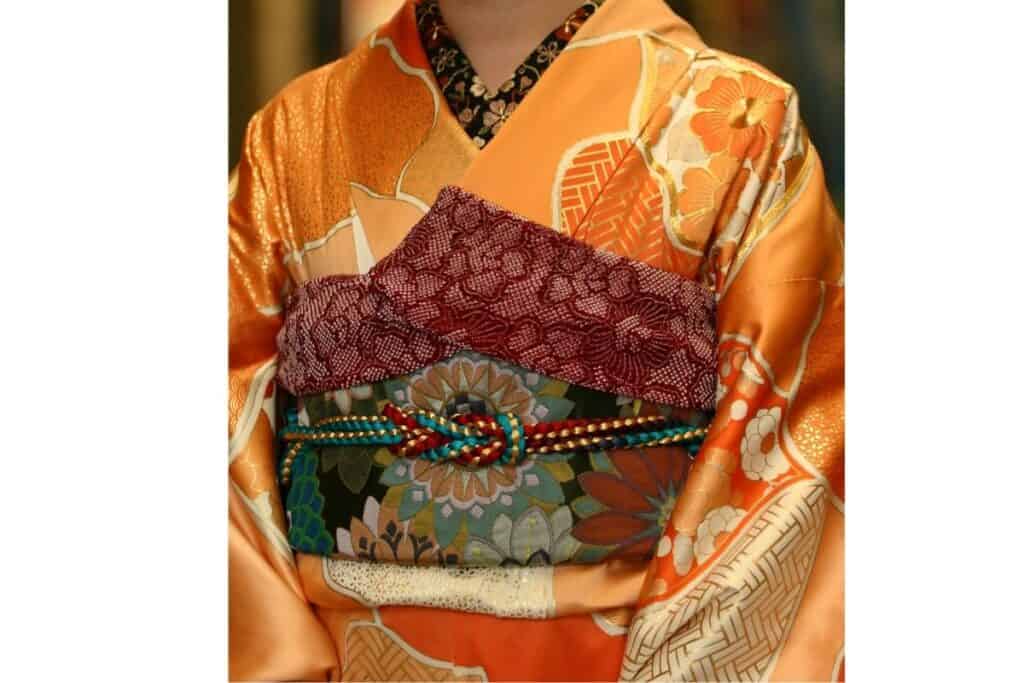
These pieces are wound over and around each other and the “kimono” is only complete once each piece is correctly secured in place and the colors and patterns are properly on display.
The nagajūban is predominantly hidden out of view but its collar is still visible from underneath the nagagi (the kimono).
Traditionally the kimono was held together and tied with a string but as the fashion grew the obi was developed as a more decorative solution. Although these three parts are the components for a kimono many people also choose to add decorative accessories to further enhance their look and make it their own.
Examples of this are decorative strings or rope-like belt is tied over and around the obi, called obijime.
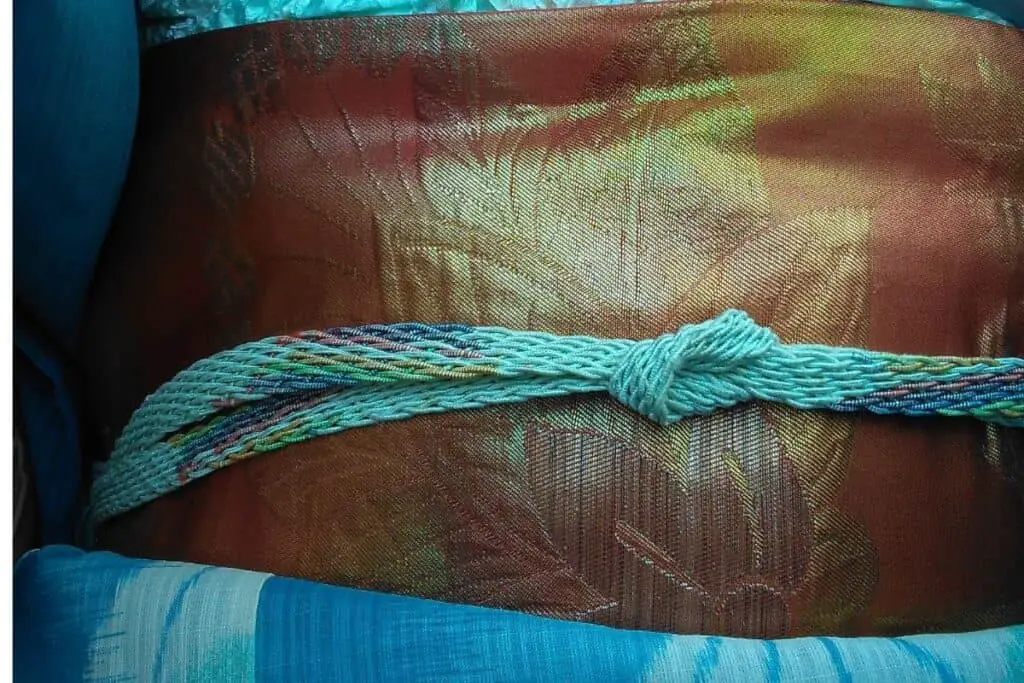
Occasions
Although the kimono is now only predominantly used for special occasions and festivals there are still varying degrees of formality with the designs, meaning that a kimono may be used as an everyday item of clothing with a simpler design or as a holiday outfit with a more decorative design.
Despite this change in habit, the actual shape of the kimono remains the same and so its appropriateness will be determined by pattern, color, embroidery, and other embellishments.
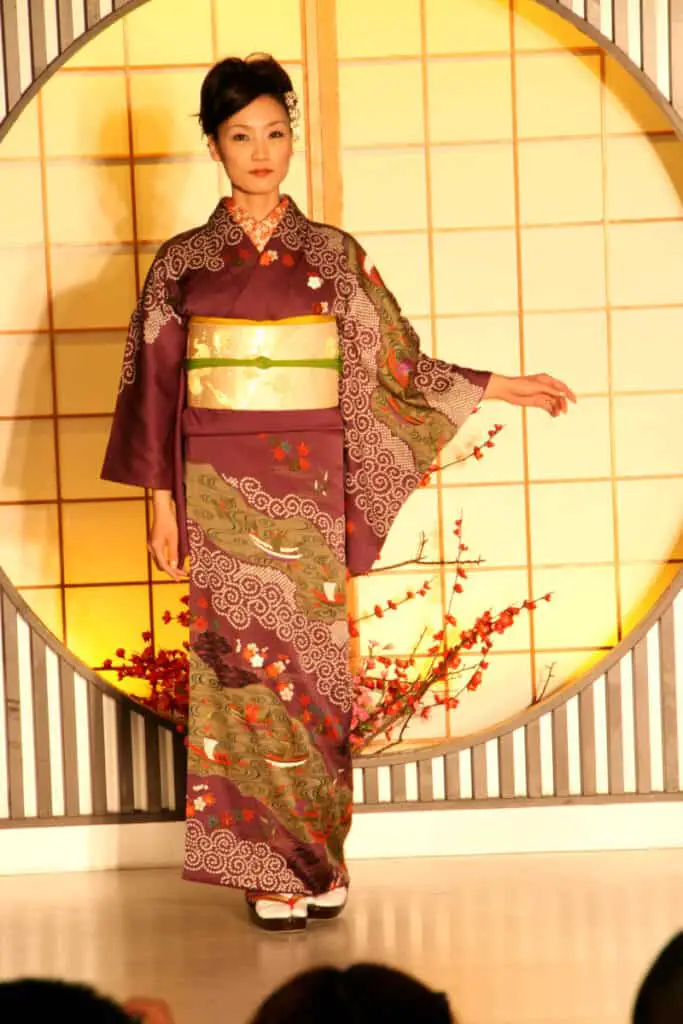
Seasonal patterns
One of the most important parts of the kimono, and the one that certainly takes the longest, is the style and pattern. There is no one set pattern for a kimono and this can change depending on the customer’s personal preference or even elements such as the season or holiday.
So, here we will describe the most appropriate and popular designs for each of the seasons to give you a better insight into the meanings behind kimono decorations.
Spring Kimonos
When it comes to spring kimonos there are many motifs that are very popular and associated with the season such as the swallow. This is because the swallow is a bird that migrates with the seasons and arrives back in Japan with the arrival of Spring.
Another popular choice is the color yellow which gives the appearance of warm sunlight as an indication of the warmer weather to come.
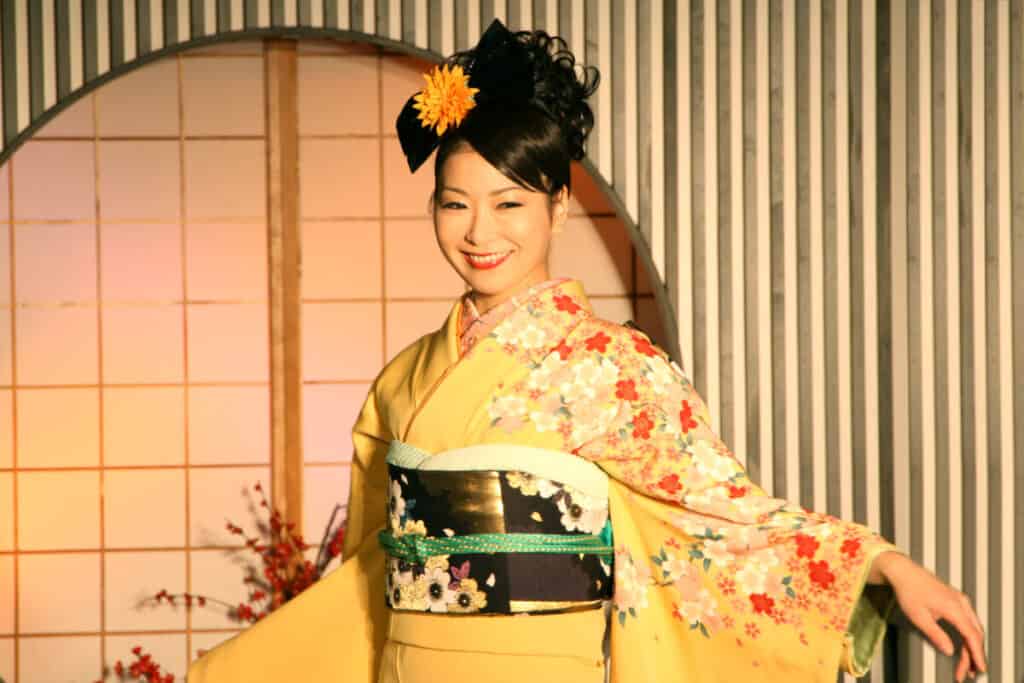
Summer Kimonos
One of the main differences between the summer and spring kimonos is their materials. In Japan, the summer months can be very warm, so it was important that the summer kimonos be weather appropriate. One example of this is the use of silk for these seasonal kimonos which helped to keep the wearer cooler in the summer heat.
Like the spring kimonos, the summer kimonos also featured images and patterns representative of the seasons. For summer many different Japanese flowers are used which bloom during these months and hence represents that time of year.
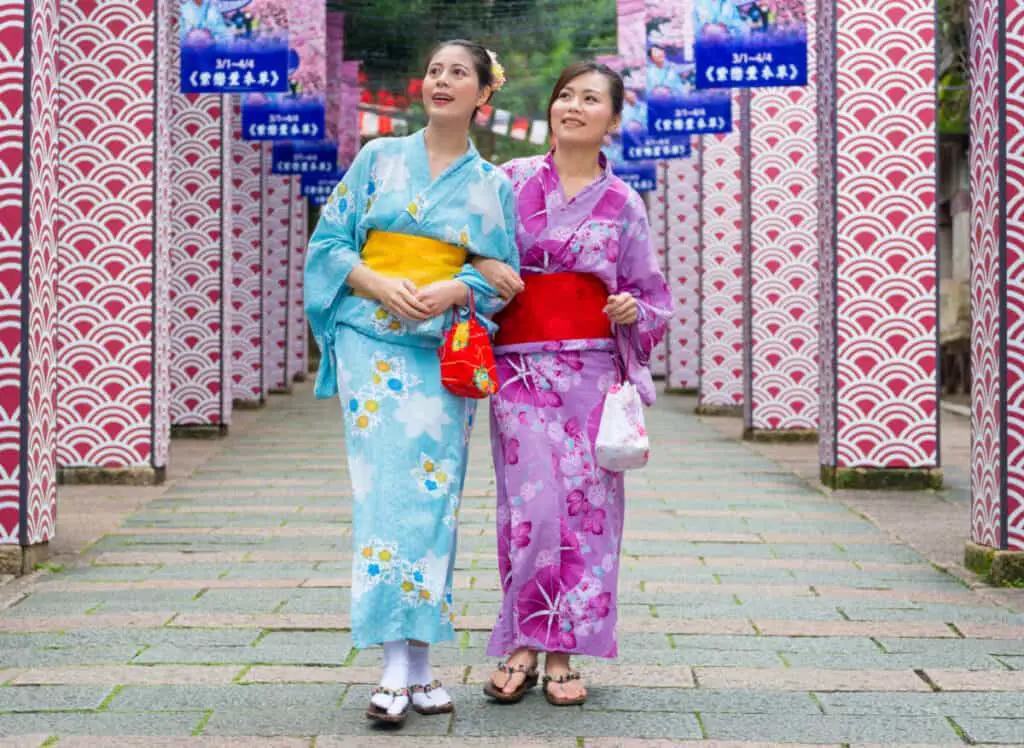
Autumn Kimonos
For autumn kimonos many darker, richer colors are used as a representation of the changing colors of the leaves.
Examples of such colors are oranges and browns. Again, symbols are used to represent this particular season and even though it is autumn there are still many flowers that are indicative of these months. One such example is the chrysanthemum flower.
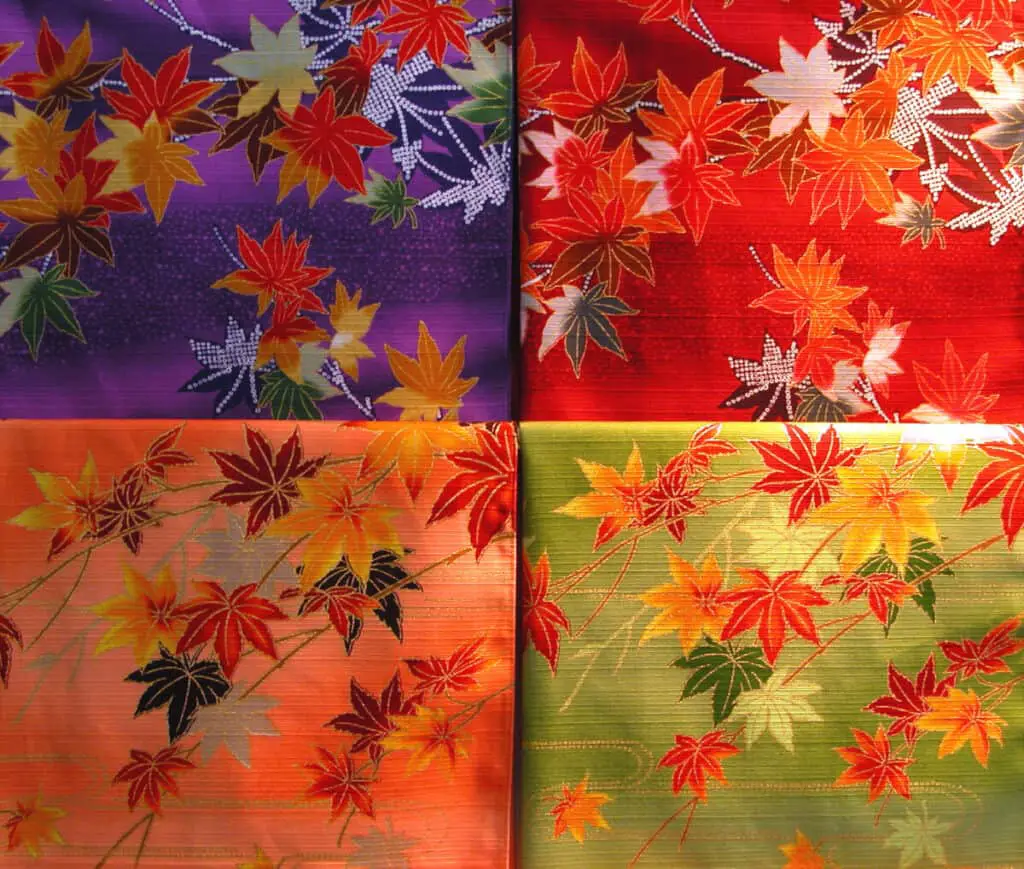
Winter Kimonos
Just as the summer kimonos feature a light and breathable material to help keep the wearer cool, the winter kimonos are made from a warmer, heavier material to keep the wearer warm in the colder winter months. Linings are often added to help protect against the cold and this is particularly true of the more snowy regions of Japan.
Winter designs are very elegant and often feature cooler colors, making them markedly different from autumn kimonos. Blues and white are a much more popular color palette for this season.
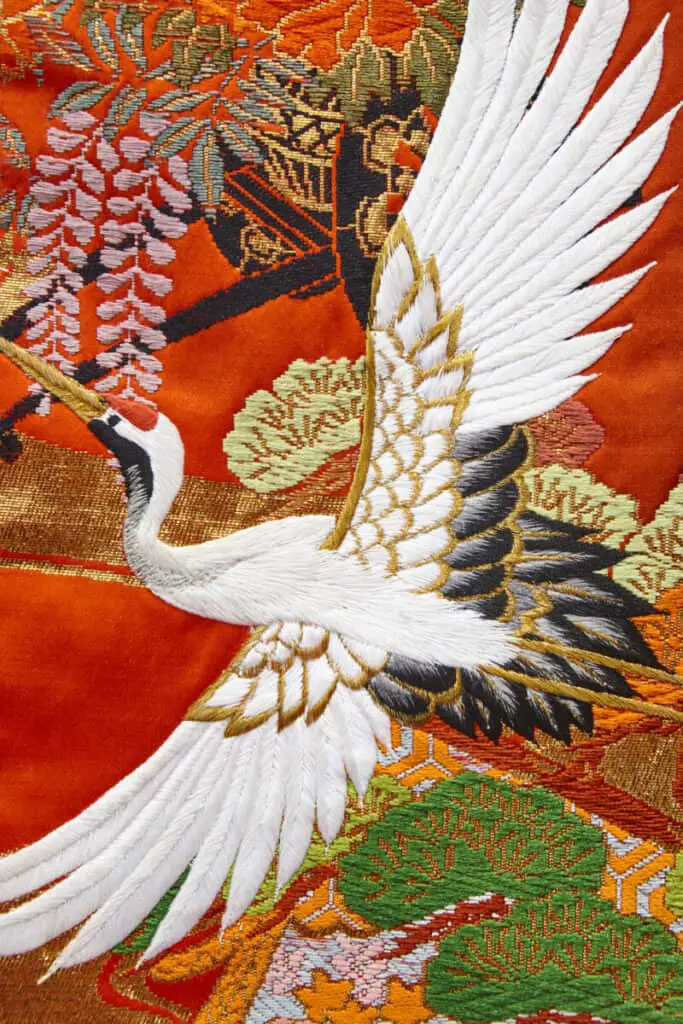
Another symbol that is popular for winter kimonos is the crane. Although cranes are said to bring good luck, and hence are used all year round, they are migratory birds and they would arrive during the winter, hence their symbolism here.
Other Symbols Incorperated Into Kimono Desgin
Although the season will play a big role in the design of the pattern, there are many symbols and patterns that are considered to be lucky in Japan and so you will often also find these incorporated into the kimono designs.
The crane, as we have already said, is said to be a lucky bird but it is considered good fortune for couples and so it is commonly added to wedding designs to bring fortune to the marriage.
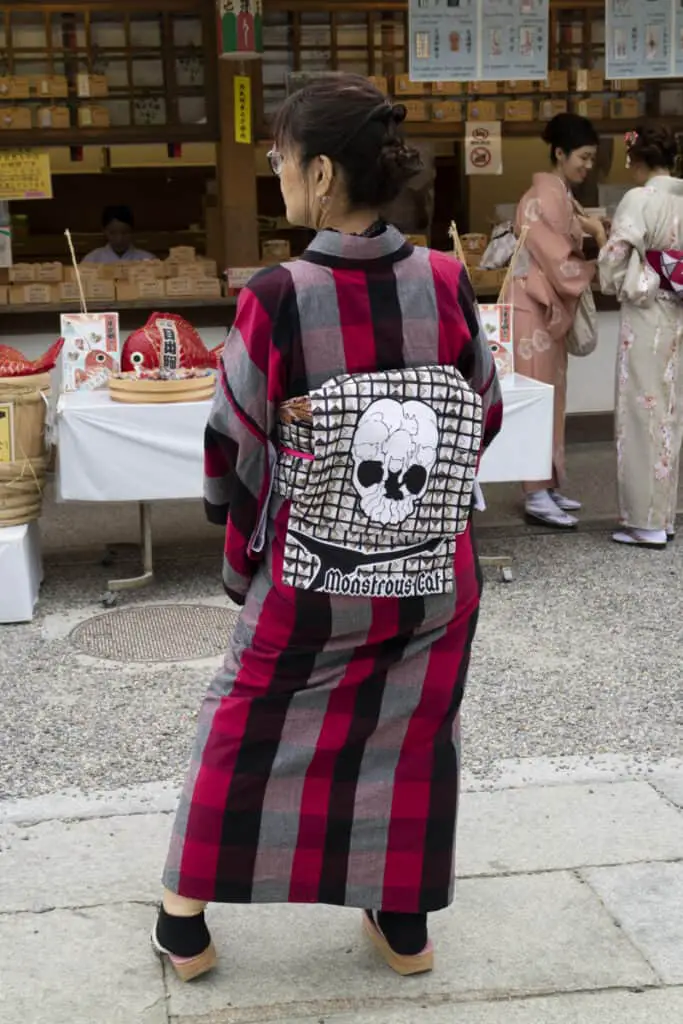
Skulls, although this may not be an immediate association, are also popular symbols to be used in kimono design as they are said to bring long life to the wearer. However, these are most sometimes found on kimonos. In Japan, their association is the exact opposite than other parts of the world. In Japan, the skull is warding off bad omens rather than encouraging them.
Final Thoughts On The Beautiful Kimono
The kimono is both a beautiful piece of clothing, a rich piece of Japanese history as well as a cultural symbol of Japan. Although it is no longer worn as an everyday item of clothing in Japan, it does still retain its significance as it is used for important cultural and personal celebrations and the design will be made to incorporate good fortune to the wearer.
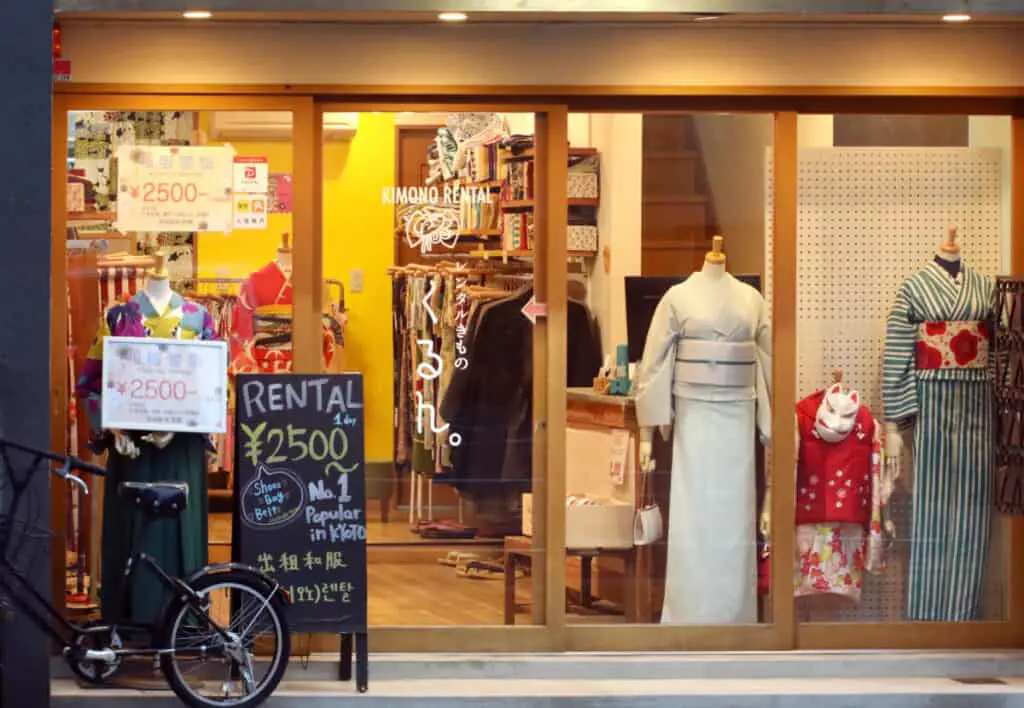
Kimonos are both made for these important Japanese celebrations and as souvenirs for tourists who often prefer the more recognizable landscape designs.
For this reason, many people immediately think of the kimono when they think of Japan and many choose to purchase a tourist souvenir kimono as a gift for friends or family.
However, with traditional kimonos, a lot of effort and thought goes into the design and pattern in order to properly represent the celebration or season and to bring fortune. The material of the kimono will depend on the season, for example, a lining is added to winter kimonos to keep the wearer comfortable.
The Kimono A Five Part Documentary

